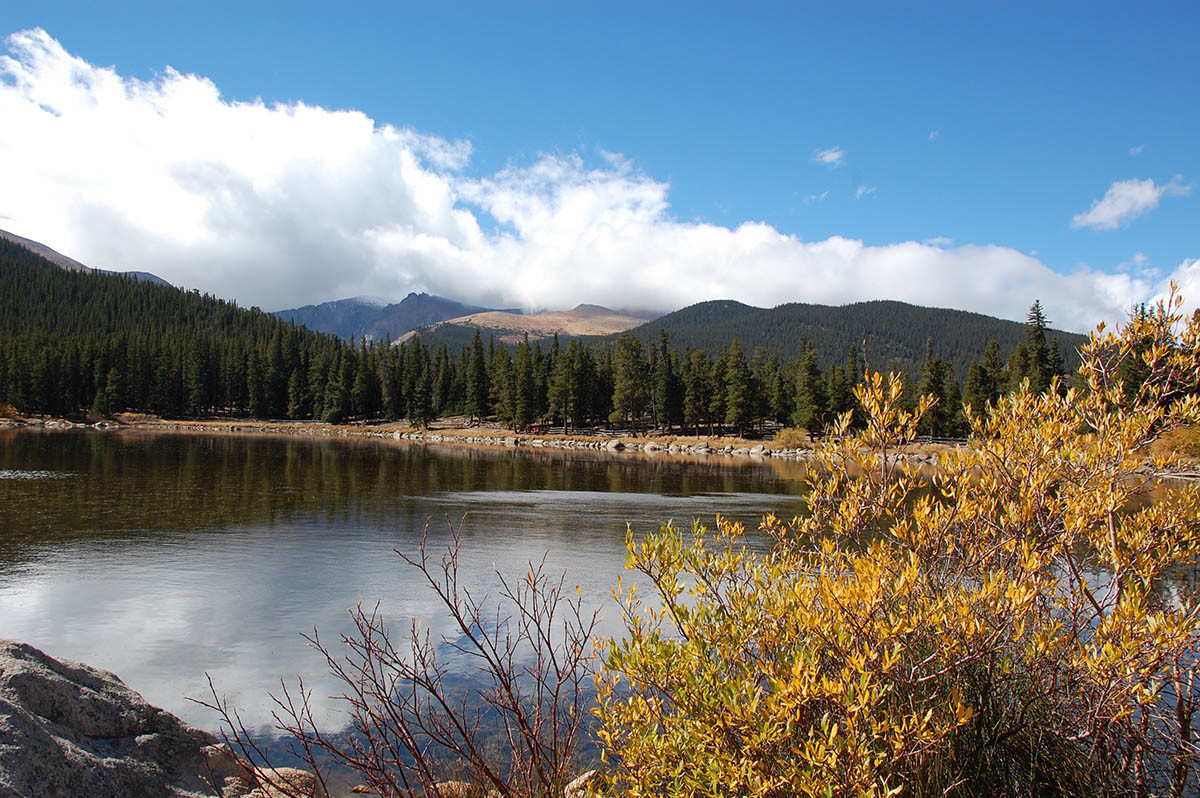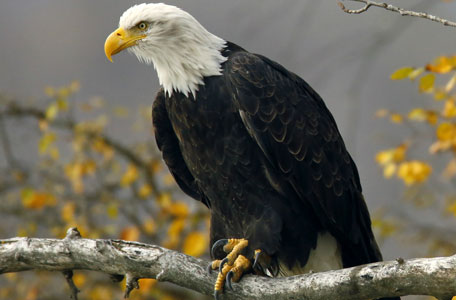The bald eagle – so named because of its white head – is found only in North America, and it’s the continent’s second-largest bird of prey. Their head and tail feathers turn predominantly white in the fourth or fifth year. Adult males weigh about eight to nine pounds. Females are slightly larger, about 10 to 14 pounds. The birds’ length is 31 to 37 inches with a wingspan of six to 7.5 feet. Only the California condor, also on the federally endangered list, is larger.
Here in the United States, the bald eagle is recognized as the country’s national symbol, a distinction it has held since 1782. Young bald eagles are dark brown in color when they fledge the nest at about 12 weeks of age.
Range
Habitat
Bald eagles are seldom seen far from water – large rivers, lakes, and seacoasts. In Colorado, they are often found near reservoirs, especially where there are abundant fish. In 2001, there were about 51 nesting pairs of bald eagles in the state. Two decades ago, bald eagles were extremely rare in Colorado and throughout the Continental United States.

Diet
In addition to fish (self-caught or stolen from other birds), bald eagles eat sick and injured waterfowl, muskrats, squirrels, rabbits, prairie dogs and often eat carrion and road-killed animals.
Reproduction
Nests can be seven to eight feet across, usually in tall trees high above the ground. Bald eagles often choose dead limbs in tall trees, possibly because their view is not obstructed by foliage. Nests are often found near water. Female lays one to three eggs, which are dull white. The incubation period is about 35 days, with both the male and female keeping the eggs warm.
Endangered Status
The bald eagle is listed in the U.S. Endangered Species List. It is classified as threatened in all of the continental United States except Alaska. Eagle abundance declined nationally due to increased human impacts in primary nesting areas. These impacts included habitat destruction, illegal shooting, and pesticide poisoning. Historically, only two to three pairs of bald eagles nested in Colorado, but the nesting pairs have recently increased by eight or nine each year. In 2001, there were an estimated 51 breeding pairs in the state. Colorado is a very popular wintering area for bald eagles. The annual midwinter count shows a stable population of up to 800 eagles. The San Luis Valley in the southern part of the state is one of their favorite places because of its supply of fish and waterfowl from open water as well as its high population of rodents and rabbits.
